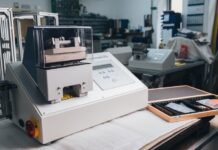In Part 1 of this series, published in the April issue of Packaging South Asia, we discussed how polymers provide all-important heat-sealability properties. The second most important property that polymers bring to the table is their chemical resistance to all kinds of products.
The chemical resistance properties of polymers translate into compatibility with packaged products and their suitability for use in direct contact with almost any product, especially food and healthcare products as well as other products like personal care products that are used in direct human contact. Polymers are usually inert and do not deteriorate or react with the vast majority of aggressive or reactive ingredients in packaged products like acids, alkalis, oils, fats, industrial and household chemicals and the like. No other basic packaging material can match this capability except glass.
Chemical resistance and compatibility for direct contact
One of the most critical property requirements of basic packaging materials is whether they can be used in direct contact with the packaged product over the entire duration of the shelf-life and use of the product. They should not interact with or contaminate the contents of the package or cause them to become unacceptable (like off-flavors, migration or organoleptic damage).
This is particularly important for products like foods, beverages, pharmaceuticals and personal care products (toiletries, cosmetics, dermatologicals and beauty aids) that are either consumed internally or used in direct contact with the human body. When this property is combined with heat-sealability, it makes the polymer almost the perfect material for use as the innermost contact layer in any packaging structure.
Even if there is some migration or leaching that takes place, it is usually caused by additives in the polymer formulation and not the polymer itself (polymers are mostly made up of hydrogen and carbon atoms). This capability is usually a function of chemical resistance to the ingredients of the packaged product, many of which can be aggressive or highly reactive and attack the basic packaging material (oxidation, decomposition, corrosion, acid attack, penetration). Although some basic polymers are affected by chemicals like surface-active ingredients like soaps, detergents and shampoos, oils and oleo-resins, they can be formulated with suitable additives or structurally modified (like ionomers) to give them the necessary chemical resistance.
Polymers, being inert and moisture-resistant or non-absorbent, also have the additional advantage that they do not promote microbial growth or proliferation. Any micro-biological deterioration usually comes only from the product itself or the package environment.
Let us look at an interesting case study that illustrates the usefulness of this property.

The laminated multi-layered collapsible tube
One of the classic case studies of all time is the packaging problem that led to the invention and development of the multi-layered laminated collapsible tube, that is now the work-horse for packaging of toothpaste. I have written about this in detail earlier (see ‘How The Multi-layered Laminated Collapsible Tube Was Invented’ in our December 2017 issue) and I am giving below a brief summary of what happened. In the 1950s, Procter & Gamble had developed a ground-breaking and revolutionary toothpaste formulation (the first ever ‘fluoride’ toothpaste) to combat tooth decay but were hamstrung in its launch by the fact that it contained an important active ingredient called stannous fluoride (which P&G christened as fluoristan) that was very aggressive and corrosive. The standard packaging system for toothpaste at that time was the collapsible aluminum tube that was produced by impact extrusion of aluminum slugs.
Collapsibility was essential as air or moisture could not be allowed to enter the tube after the toothpaste was dispensed. Direct contact with stannous fluoride was a serious problem because it caused metals to corrode. Even when the inside of the metal tube was coated with the most resistive lacquers known at that point of time, it penetrated the lacquers and incidence of corrosion was unacceptably high.
Although P&G decided that the ‘fluoride’ formulation was too good to defer its immediate launch, they gritted their teeth and launched Fluoristan toothpaste. However, they could not actively promote and push the product unless a solution to the compatibility problem was found. The solution had to meet the following criteria:
– Compatibility with stannous fluoride
– Very high barrier to moisture, gases and flavors for extended shelf life
– Collapsibility
– Capability for being sealed to provide tube closure
P&G entrusted this development to American Can, who were their largest tube suppliers. American Can quickly realized that the material most suitable for extended direct contact with the toothpaste would be a continuous layer of polymer that would be impervious to the transmission of stannous fluoride across its surface. Although seamless polyethylene tubes were available, they were neither collapsible nor did they provide the requisite barrier.
American Can finally homed in on a multilayered laminated construction for the tube body that comprised multiple layers (5 to 7 or more) that included polyethylene (for contact, sealability, as the external layer and as tie layers for extrusion lamination), aluminum foil (for barrier and dead-fold for collapsibility) and paper (for non-creasing and for providing a flat surface for high-quality print graphics). The use of polyethylene as the sealant layer also ensured a perfect hermetic seal while closing the tube after filling, which was a huge bonus as the aluminum tube did not provide this – it had to be folded over and crimped for closing.
The biggest plus was that the compatibility problem was now locked and another big plus was that the laminated tube could be filled and closed on conventional tube-filling lines. The new tube was also aesthetically vastly superior (it could now be printed with tonal reproduction) as it was printed on a flat wide web before tube construction. Aluminum tubes could only be printed with offset letterpress that posed limitations on print quality and caused the tubes to crease and look bad while in use and during handling.
P&G rechristened the formulation as CREST and the re-launch of this toothpaste created history. It went on to become probably the most successful toothpaste ever and its formulation and packaging were recognized by the American Chemical Association as one of the 100 greatest inventions of all time.
Conclusions
Over a period of time, polymers were found to be perfect for compatibility with almost all packaged products ranging from simple ones to the most difficult ones that other materials, except glass, could not comply with. The range of applications cover small retail packs, intermediate packs and go all the way to large bulk packs. Today, it is impossible to conceive of alternatives to polymers in applications like trash bags, liners for bulk chemical cans/canisters/drums and liquid packaging of all kinds. Even metal containers are used only because they can be made compatible with the use of polymer coatings and lacquers. Flexible packaging would simply not exist if polymers were not available for use in their construction.












